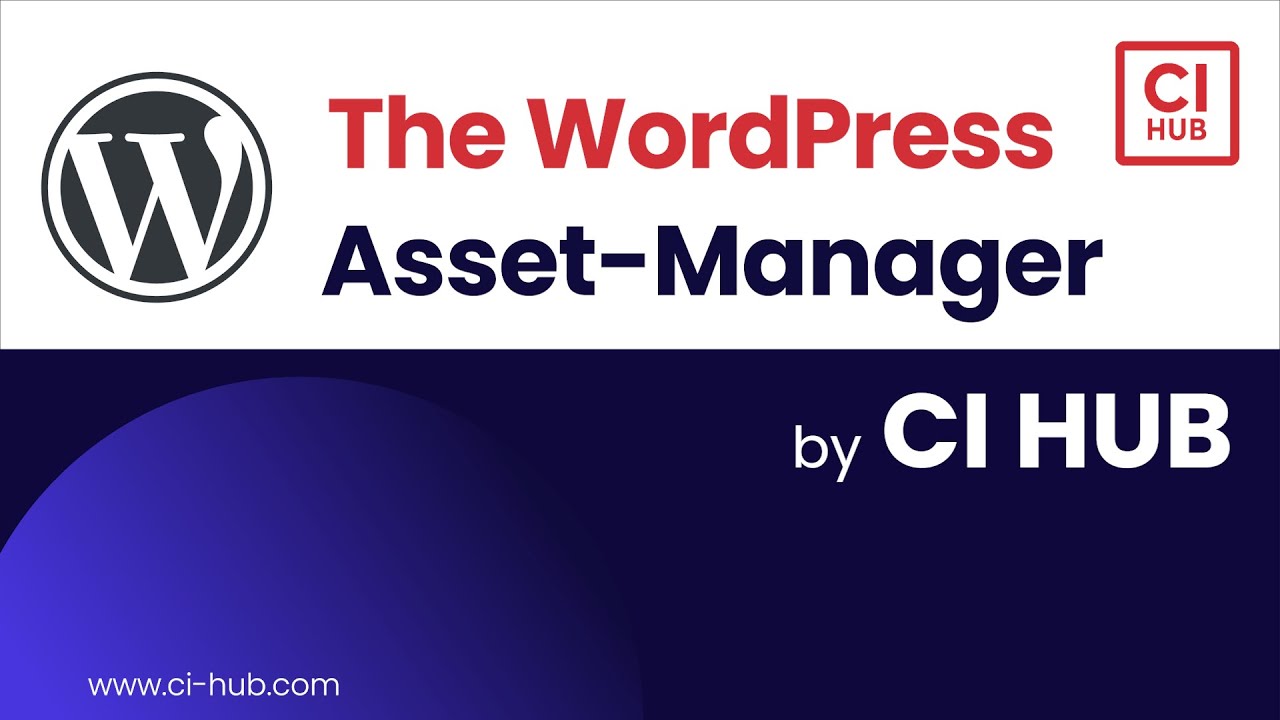
June 11, 2024
How to Manage Your Assets in WordPress with the CI HUB Connector
WordPress is a versatile content management system that powers millions of websites across the globe. Its user-friendly interface and extensive plugin ecosystem make it a top choice for bloggers, businesses, and developers alike.
However, managing digital assets and integrating various content sources into WordPress can sometimes be challenging. With a Connector plugin like CI HUB, you can seamlessly connect multiple digital asset management (DAM) systems, cloud storages, and stock image providers directly within the WordPress interface.
Follow this step-by-step guide to get started!
Step 1: Where to Find the CI HUB Plugin
-
Go to your WordPress dashboard.
-
Navigate to the Plugins section.
- Search for CI HUB or "CI HUB Connector".
Step 2: How to Install the CI HUB Plugin and log In
-
Click on the Install button next to the CI HUB plugin.
-
Once installed, click Activate.
-
After activation, open the CI HUB Connector.
-
For first-time users, you will need to register an account.
-
If already registered, log in using your credentials.
Step 3: Connect WordPress to Various Source Systems
-
In the CI HUB interface, tap the little plus icon in the connection section.
-
Choose from your favorite integrations or browse through all available integrations.
-
If you have previously created a profile, you can now load and connect to various systems easily, and also save and recall different profiles as needed.
-
You can then easily switch between connected systems with a mouse click.
Step 4: How to Use the Interface, Navigate, Search, Use Filters, and Views
-
You can do a full text search to find assets across any system.
-
Utilize filters specific to each source system to narrow down search
-
Double-click on folders to navigate or use the breadcrumb trail to switch between folders.
-
Use the check panel to view all digital assets used in your system.
-
Switch between detail view, list view, and customize metadata fields.
-
Adjust preview sizes and show/hide captions as needed.
Step 5: Placing Images from Various Source Systems Without Leaving WordPress
-
Select an Image from a connected DAM system.
-
Place the Image directly into your post.
-
You can switch to a different source system (e.g., Box, Unsplash) and place images in the same way
-
You can also select the appropriate rendition (e.g., JPEG 1024 size) before placing the image.
- Adobe Photoshop or Illustrator files can be placed by selecting the desired rendition (e.g., JPEG) and adding them to your post.
Step 6: How to Get the Latest Version of an Asset with a Version Check
-
To check if you are using the latest version of an asset, go to the media library and access the CI HUB Connector.
-
Click the gear wheel icon to check the version status of an asset. If a newer version is available, a warning symbol will appear.
-
Open the details section to view all versions and select the newest one.
-
Relink the asset to update to the latest version automatically.
Conclusion
By following these steps, you can effectively integrate and manage your digital assets within WordPress using the CI HUB Connector. This simple plugin will significantly enhance your workflow, so you can work faster, while keeping your content up-to-date.
Get started today by downloading the CI HUB Connector for WordPress!
The CI HUB plugin also works in Adobe Creative Cloud, Microsoft Office 365, Google Workspace (Sheets, Docs, Slides), Sketch and Figma. Find out more by visiting our product page!

Article by
Gerd Glaser
CXO, Chief Experience Officer